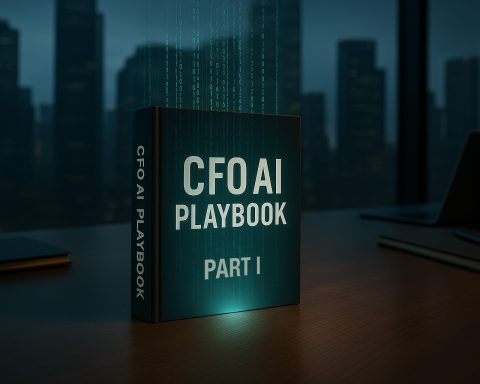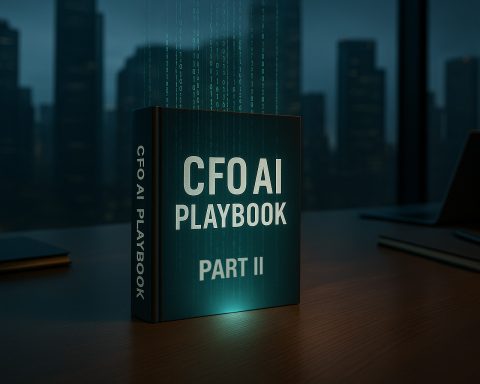While every business consultant, coach, and guru may have a different approach to helping you stand out from the competition, one principle remains constant: the power of consistency and repetition. Some say, “Practice makes perfect”; others say, “Practice makes progress.” But in the world of business and finance, let’s face it—practice makes profit. When you commit to showing up consistently, whether it’s posting, branding, engaging, or developing, you’re laying the groundwork for long-term wins.
I’m not talking about practice like playing piano, where the end goal is nailing a perfect piece, or practicing baseball, where you’re aiming for that grand slam. I’m talking about practice in the sense of yoga or meditation—an ongoing effort to maintain a desired state of mind, body, and being. There’s no finale here, no single performance. It’s about coming back to the mat (or the feed, in the case of social media) again and again, building your presence one small step at a time.
Show Up, Stay Seen, Build Trust
Consistency is the secret sauce to getting noticed and staying relevant. You can’t just post once, send a single email, or make one phone call, vanish for two months, and wonder why no one’s paying attention. People trust professionals who show up regularly—especially if you’re a CFO, Controller, Treasurer, or fractional consultant.
Too many people engage in sporadic bursts—ten posts in one week, followed by months of silence. That approach never really sticks. It’s like hitting the gym once and expecting a six-pack. Instead, aim for smaller, regular actions: a few posts a week, a couple thoughtful comments on industry news. Consistency shows people you’re in it for the long haul.
Judith Glaser, in her book Conversational Intelligence: How Great Leaders Build Trust and Get Extraordinary Results, emphasizes that truly transformational conversations—what she calls “Level 3 Conversations”—are built on deep trust, collaboration, and openness. These conversations aren’t about winning arguments or making quick transactions; they’re about genuinely connecting, co-creating, and innovating together. Consistent engagement makes these transformational conversations possible, laying a strong foundation for meaningful relationships, deeper trust, and ultimately, achieving those extraordinary results she describes.
This principle isn’t new—great strategists have long recognized its power. In The Art of War, Sun Tzu taught that ‘every battle is won before it is fought,’ emphasizing the strategic importance of preparation and positioning. Likewise, in Robert Greene’s The 48 Laws of Power, he warns us to guard our reputation fiercely, as it is a cornerstone of professional power. Consistency in branding and engagement is exactly how finance leaders secure that position long before critical decisions are made.
Why Consistency Matters for Financial Executives
In finance, perceptions drive real-world outcomes. Consistent branding and visibility aren’t just “nice to have”—they directly influence valuation, investor confidence, and the cost of capital. When you (or your company) consistently appear dependable, knowledgeable, and transparent, stakeholders perceive less risk. Less perceived risk translates into measurable financial advantages:
- Enhanced Investor Confidence:
A CFO who consistently shares insights about economic shifts, industry trends, or risk management earns the trust of shareholders and markets alike. That trust can boost company valuation and improve stock performance. - Reduced Financial Risk Premium:
A strong, financially stable, consistent brand can lower the risk premium lenders and investors assign to your organization, potentially reducing borrowing costs and opening access to greater capital. - Attracting and Retaining Top Talent:
High-performing finance teams gravitate toward leaders who communicate a clear, consistent vision. Regularly sharing your financial strategy attracts skilled professionals who value stability and forward-thinking leadership. - Improved Stakeholder Relations:
Consistent visibility reassures board members, regulators, clients, and vendors that your approach is proactive rather than reactive, facilitating smoother negotiations, more favorable terms, and a healthier bottom line.
As Al Ries and Jack Trout emphasize in their classic, The 22 Immutable Laws of Marketing, consistency, perception, and focus aren’t just marketing principles—they’re essential elements of sustained profitability and reputation, especially in finance.
In short, for finance professionals, consistency directly impacts ROI. It strengthens stakeholder confidence, reduces perceived risk, and enhances long-term profitability. Consider consistent branding and thought leadership as a form of career equity—an asset that grows in value over time.
But consistency alone isn’t enough if you don’t create the right impression when you show up. That’s where branding enters the picture. Beyond visuals or logos, branding is about the emotional connection you form with your audience. When consistency meets compelling branding, you leave a memorable impression that keeps stakeholders coming back.
Let’s dive deeper into how that feeling can elevate your professional presence.
Branding: The Feeling You Leave People With
If you’re a finance professional—CFO, Controller, VP of Finance, Treasurer, consultant, or similar—your brand isn’t just about a slick logo or a carefully curated LinkedIn banner. It’s about how people feel when they think of you. That emotional connection is what sets ordinary professionals apart and fosters trust. In the finance world, where numbers often dominate the conversation, intangible assets like reputation and trust can be just as critical as a healthy balance sheet. Your personal or corporate brand is part of that intangible ‘brand equity’—and it can significantly influence everything from investor confidence to stakeholder perception. Finance people don’t always think about “feelings”—numbers don’t have feelings, they’re black and white (and sometimes red)—but people DO.
Maya Angelou once said, “People will forget what you said, people will forget what you did, but people will never forget how you made them feel.” She may not have had PR or branding in mind, but those words nail exactly what branding is about: the gut feeling we leave behind. A client might initially hire you for your expertise in finance, but it’s the sense of trust, confidence, or comfort you provide that keeps them coming back and referring you to others.
I’ve spent decades in the marketing and advertising world, and one thing I’ve learned is that the best branding—whether for a person, a company, or a product—isn’t just about visual elements or mission statements. It’s about understanding how your target audience feels and shaping your message so that it resonates on an emotional level.
- Emotional Connection is Key: People might admire your skills, but they remain loyal because of how you make them feel—safe, understood, or inspired.
- Consistency Matters: Your tone, message, and values should be consistent across the board. That’s how you reinforce the emotional connection and build a recognizable identity.
- Going Beyond the Function: Sure, you offer top-notch finance advice, but what sticks is the experience of working with you—how supported or confident you help people feel.
- Nurture Your “Brand Ambassadors”: The folks who’ve seen you in action and sing your praises are your best marketing. Their genuine recommendations can carry more weight than any ad campaign.
When your audience feels good about your brand, they’ll spread the word. They become unofficial spokespeople who do your branding work for you. That’s why it’s so critical to understand their perspective: What’s important to them? What pain points can you solve? And most importantly, how do they feel when they interact with you or see your content?
Remember, the “mark”—like logos or fancy graphics—is just the frosting on the cake. The real substance is in the gut feeling you leave behind. That’s what makes people trust you, stay with you, and recommend you to others. When you nail that, you’ve got a brand that resonates—and that, my friends, is real thought leadership for any finance pro who wants to stand out.
Real-World Examples: The Power of Consistent Presence
Consistency might look a little different from brand to brand, but at the core, it’s always about staying top-of-mind. Here are three stories—each focusing on a slightly different angle—that show how consistent repetition, visibility, and experience can make a lasting impact.
Blimpie (Repetition)
Back in the day, Blimpie—a sub shop chain founded by Tony Conza—ran a 30-second commercial that repeated the Blimpie name and flashed the logo again and again, popping out from behind a meat slicer. (Watch it here: Blimpie Commercial) Might sound goofy, but it worked. People remembered the name because they saw and heard it so often. That repetition stuck in viewers’ minds long after the commercial ended, proving that simple, consistent messaging can carve out a lasting place in the market.
Red Bull (Visibility)
When Red Bull first launched, they used a guerrilla marketing tactic: placing empty Red Bull cans in high-traffic areas to create the perception that everyone was already drinking it. I’m not advocating littering—no way—but you have to admit it was brilliant. They made the brand look ubiquitous. Online, you can replicate that effect (ethically) by reposting relevant articles, commenting on industry updates, and showing up in key discussions. The goal is the same: appear so consistently that people assume you’re a fixture in your field.
Starbucks (Experience)
Starbucks is another perfect case of consistency at work. Wherever you go, you’ll recognize the same logo, color palette, and store ambiance—right down to the music and menu layout. What sets Starbucks apart, though, is how they couple that brand uniformity with personal touches like writing your name on the cup. People crave both familiarity and a sense of personal connection. Starbucks delivers both, so even though you might be thousands of miles from home, a familiar green sign and the ritual of having your name called creates an instant bond.
Mid-Sized Manufacturer’s CFO (Trust & Transparency)
At a mid-sized manufacturing firm, the CFO made a habit of publishing short, clear financial updates each quarter—not just for investors, but for employees and suppliers too. Instead of burying them in jargon, she used everyday language, highlighting cost-saving measures and strategic wins. Over time, stakeholders came to see her as transparent and reliable. By consistently sharing these updates across LinkedIn and company newsletters, she built trust that translated into easier financing terms and stronger vendor relationships. In a field where credibility is everything, her consistent communication became an unexpected competitive advantage.
The Common Thread
Whether it’s Blimpie repeating its name, Red Bull making its product look omnipresent, Starbucks offering a consistent-yet-personal experience, or a CFO staying transparent, these brands and people prove one thing: consistent presence works. By regularly appearing in front of your audience—in ways that reinforce your core message or feeling—you stay top-of-mind and build trust. That trust and transparency eventually translates to loyalty, referrals, and long-term success.
Finding Your Balance
Consistency doesn’t mean burning yourself out or posting every hour. The whole idea is to find a rhythm you can maintain. Maybe it’s one solid LinkedIn post per week, or two short takes per week on Twitter, or a monthly newsletter if that’s more your speed. Pick a frequency you’ll actually stick to rather than going all in for two weeks and then disappearing for two months.
Action Steps
- Unify one element of your brand: Make sure your LinkedIn headline matches your email signature, or create a short tagline that captures who you are and what you do.
- Set a posting schedule you can handle: Weekly, biweekly—whatever fits your life. Consistency over intensity.
- Engage in real conversations: Channel your Conversational Intelligence. Build trust by being present and talking with people regularly, not at them, and certainly not just when you need something from them. Join discussions, ask questions, and share relevant thoughts.
Conclusion
At the end of the day, consistency is what sets you apart. Think of it like yoga or meditation—an ongoing practice you return to regularly, without the pressure of any single “final performance.” Don’t only “get out there” when you need something, or are searching for that next opportunity. When you’re consistently visible, people see you as reliable, knowledgeable, and top-of-mind. As former US Senator Lincoln Chafee said, “Trust is built with consistency.” And in a competitive field like finance—where trust is everything—being that steady, recognizable presence is what ultimately helps you stand out and spark those extraordinary results everyone’s after.
That’s your edge: showing up, day in and day out, so that when someone thinks, “I need a CFO, a Controller, or a solid consultant,” your name is the first that comes to mind.





















